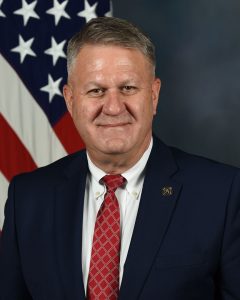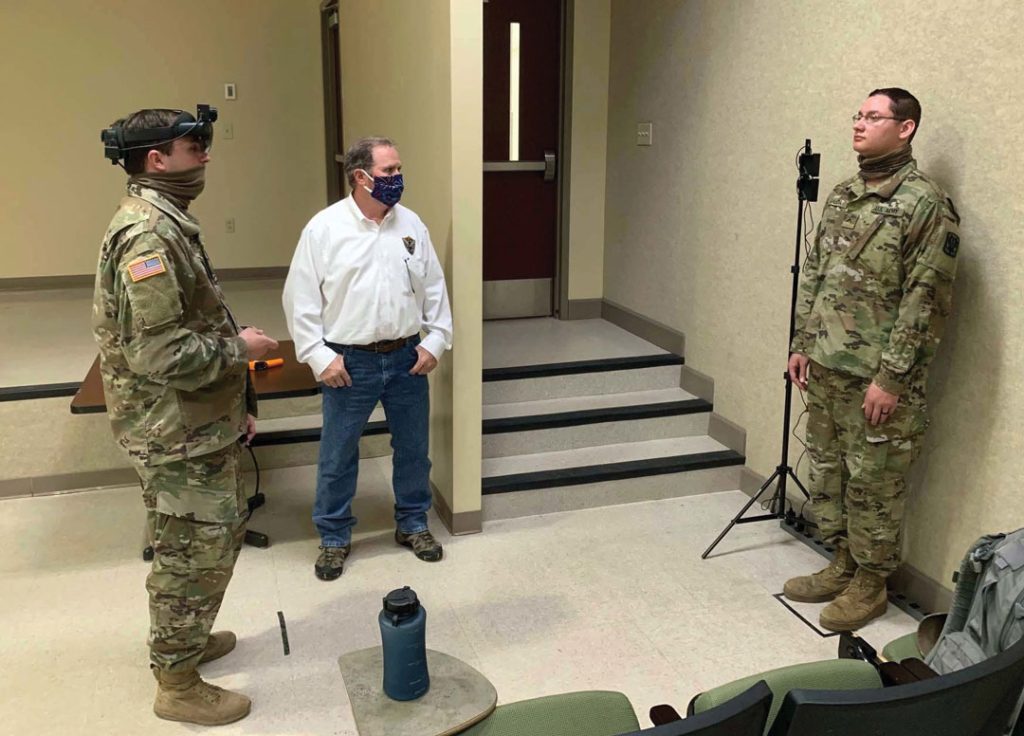
LEARN FROM THE USER: Soldier touch points were crucial in the development of the IVAS, and will remain an important factor in future RDT&E efforts. (Photo by Bridgett Siter)
FROM THE DIRECTOR OF
ACQUISITION CAREER MANAGEMENT
RONALD R. RICHARDSON JR.
RDT&E is critical to everything we do in Army acquisition.
The 2019 Army Modernization Strategy challenged the Army to achieve 10X overmatch over the next decade. We can only become more lethal and globally dominant if we develop and enhance our capabilities, continue to test and refine operating concepts, draw on emerging technologies, and anticipate changes in the operating environment. Research, development, test and evaluation (RDT&E) is at the cornerstone of these efforts.

Ronald R. Richardson Jr., Director, U.S. Army Acquisition Support Center and Director, Acquisition Career Management
Then we tested.
We leveraged multiple Soldier touch points to ensure the capability was evolving to meet user needs, refining both the requirements and the capabilities as we went—constantly pushing the envelope of technology.
Both programs completed undeniably successful rapid prototyping efforts. This achievement is the result of a huge integration effort made up of tireless Army Acquisition Workforce (AAW) professionals and teams, across the entire Army acquisition enterprise, working in synchronicity to refine requirements, insert technology and deliver cutting-edge capabilities to the force.
The role the AAW plays in the development and execution of programs like IVAS and NGSW is one that requires an eyes-wide-open approach—having an understanding of where the program and the Army is going and how to best get there. It also means knowing when and where to accept risk, and understanding the associated implications in order to allow Army leaders to make informed decisions.
This extends even more so to our teammates in RDT&E. These professionals must know their craft and have the capability to do assessments and survey the environment. They need to know when to partner with others, adapt or modify an off-the-shelf product.
RDT&E is critical to everything we do in Army acquisition. We all come to the table with varying degrees of education and experience, but we can always learn new things. We’ve incorporated Soldier touch points into the process to ensure we are providing the user with what they want, we test as we go, and we make course corrections along the way.
It’s important that the rest of us support our teammates in RDT&E. We need an agile and adaptive workforce to proactively push the envelope with regard to technology, and refine where necessary. We need to equip the entire community with the tools and talent to bring these key projects to fruition.
The programs that our community is responsible for have huge implications on our ability to meet our modernization priorities. It is my responsibility as the Army director of acquisition career management to best prepare our workforce for this challenge.

RESEARCH REALIZED: Next Generation Squad Weapons—like this one being tested at Fort Dix, New Jersey—used significant RDT&E efforts to bring the technology to fruition. (Photo by Kevin C. Mcdevitt)
Our Student Loan Repayment Program helps us to recruit and retain top talent with skills in science, technology, engineering and math, and in business acumen. Our Training With Industry program exposes military officers to the latest commercial business practices and technology development processes. Defense Acquisition University’s Senior Service College Fellowship program that my office sponsors prepares our senior-level civilians for leadership roles in program management and contracting.
These leader development programs enhance our workforce’s capability, especially during times where our Army is facing declining budgets. We can’t afford to not take a holistic look at how we manage and intertwine the acquisition process. We must show and develop what’s possible. If you want overmatch, you can’t buy off the shelf—you can only do that with RDT&E.

MULTI-USE RESULTS: The thermal capabilities on the IVAS, which are the product of thorough RDT&E and Soldier feedback, can be used to detect fevers in ill personnel and have been used to fight COVID-19. (Photo by Courtney Bacon, Program Executive Office for Soldier)







